The Banner Saga 2: Capturing the Spirit of Leadership
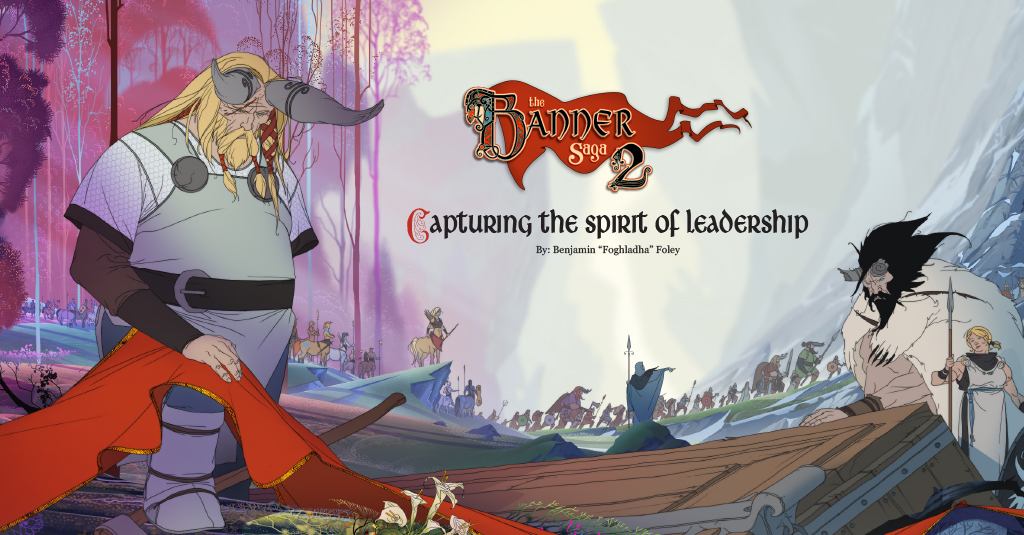
A little more than a year ago, I purchased the Banner Saga on GOG.com during one of their many fire sales. Originally I was drawn by it’s Secret of the Kells look and Norse themed mythos. What I discovered was something else entirely. I would end up buying it again on my PS4 and again on Steam. This game put its hooks in me, and sent me on a truly emotional journey that gave that player a real taste of leadership. Decisions were rarely easy, they were almost always painful, and you were forced to live with the consequences.
When the opportunity to review and stream the second chapter of the Banner Saga arrived, I jumped at it. What would happen in the second part of this trilogy. Would my people be saved? Without spoiling the first game or the second, I can tell you that your story resumes right where it left off. Within the first hour of playing I could see that things have been refined into a science and the same Oregon Trail feel that the first game gave me, the second one brought out in droves. Often lives hang in the balance by your actions and the fate of your people and the people who come in contact with you are held in the palm of your hand.
Even if geeking out on the second game wasn’t rewarding enough, I am fortunate enough to speak with the team and get an insider look at what went into bringing the Banner Saga to market.
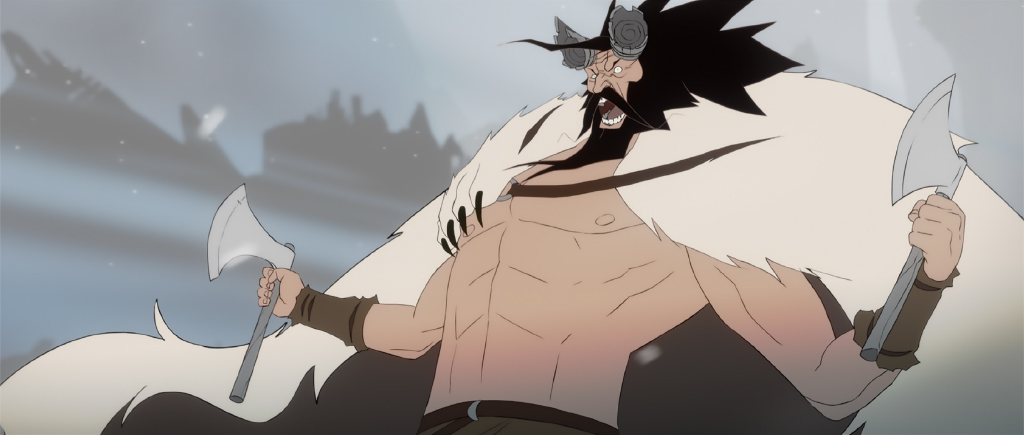
The original Banner Saga is one of the most successful graduates of Kickstarter bringing in $723,886 of your $100,000 goal. It took all of one day to meet your goal. What was running through your mind when you saw this outpouring of support?
I think aside from the obvious huge relief it was that we’d tapped into something that had a lot of appeal and had the legs to turn into the project we wanted to make. We were also really humbled by the support, it’s not every day you get to pitch an idea that you love and want to create that could be so overwhelmingly supported by a large community of people, that’s pretty rare but we’ve never forgotten it. One of our friends actually convinced us into running a Kickstarter and to smash the budget goal was just amazing because we’d already decided that the majority of that funding was going directly into the game, by that I mean it wasn’t going to inflate salaries and perks it was going into music, art, animation and the core ingredients of making a quality game. To smash our Kickstarter goal like that just meant we had more opportunities to drive quality with more animations, the music and content which was awesome.
I imagine this raised the bar a bit higher than you anticipated. What challenges did the team face due to the new found overwhelming support?
Well for starters when you have that kind of backing you obviously take a lot more onto your shoulders because you now have a level of expectation that has to go up a few notches above your own. We consciously kept the team small, I think it would be easy to assume we just ramped up to a huge team to get the work done but far from it - John, Drew (writer) and I made up the core team. John and I had both done extensive stints with bigger devs so it just became a much bigger project for a small team. The cash from the Kickstarter doesn’t just suddenly arrive on your desk. We were all still scraping by, I was still going through my savings at that time too, I’d maxed out a couple of credit cards, borrowed money from my father just to get to that point. Funding is one of the hardest aspects to manage, despite Kickstarter success and the funds we’d acquired you’d be surprised how fast you go through it. A lot of it is relative as well, more money means more quality = more expense.
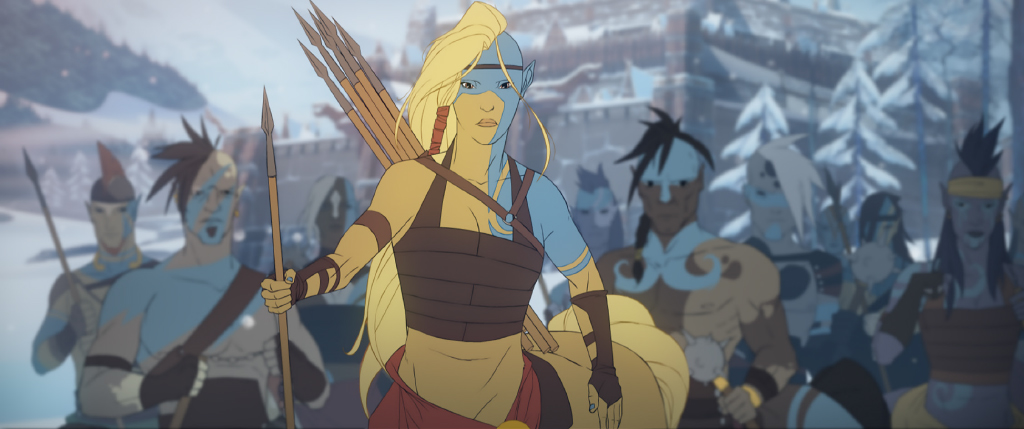
After the huge success of The Banner Saga, and knowing you’ve committed to 3 in the series, what toll did this take on the team? What changes had to be made to see to it that Banner Saga 2 lived up to the first games success?
The first game was a great learning curve in every sense of the word since it was our first Kickstarter, we were a lot more prepared this time round and knew where the bottlenecks in the dev cycle would be. Testing for example can eat up so much of your time but having publisher Versus Evil really helped out a lot for the sequel as it did in the first game. The development on Banner Saga 2 still meant late nights and you work solid on retaining that build quality since it is a sequel and an evolving brand. We made it a point to look at all the feedback, both critically and from the community from the first game and both John and I were keen to add more content into the sequel anyway. For example, Banner Saga 2 has more scripted storytelling to the combat so that it’s more ingrained to the game flow, we also introduced the new race, the horse-born and we tweaked the amount of items you could carry as well as improved other areas of the game in line with feedback we got from the players. The feedback we got was basically that players loved the first game but just wanted more of everything.
With the first two chapters of the Banner Saga now behind you, what lessons have you learned moving forward into the final chapter of the Saga?
I think for me personally it’s time, you can never have enough of it as a developer even when you’re working all hours, the clock is your enemy. Having resources where we couldn’t do certain things ourselves was crucial. Testing, PR and marketing are essential, primarily because the marketplace is a lot more competitive than it was when we launched the first game.
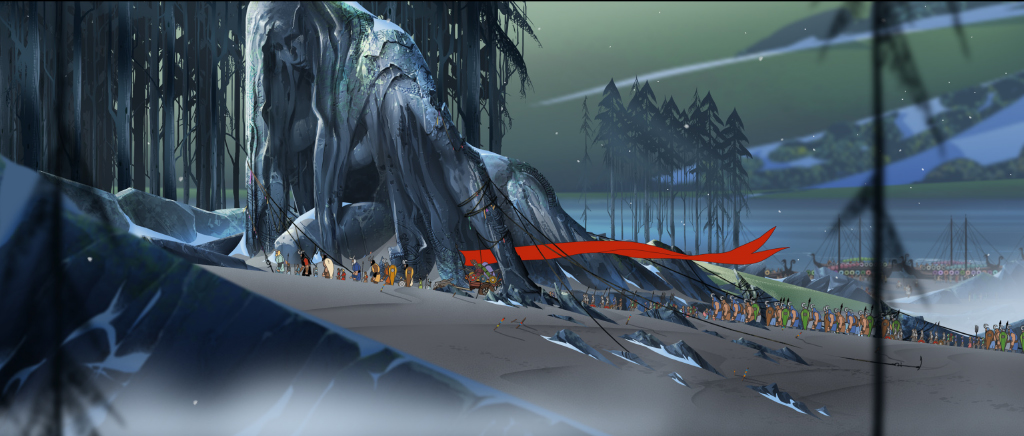
From the first game to the current game how much has your team at Stoic grown?
To be brutally honest it hasn’t, we’ve always traditionally been a small team, even with the Kickstarter funding we kept staffing to a minimum based on what the project requirements were. We do hire external resources when we need to, merely to help with the workflow and address aspects of development that would be far too time consuming for John and I to do ourselves.
I’d like to talk about Leadership for a moment. Never before have I seen a game so emotionally charged that it actually captures the very spirit of leadership. Can you tell us a little about the motivation and inspiration behind this core aspect of this game? What do you hope players take away from this game?
We never went into Banner Saga with the desire to make lots of money as our core motivation for making it, we just wanted to make a really, really great game. We wanted to make a game that people would talk about and making difficult decisions and sacrifices that affect our emotional state is something we all experience on a personal level. We also wanted the game to have characters that you could invest in emotionally, so that making those leadership decisions became a process that would have real consequences. The role of responsibility and consequence affect us all at some stage in our lives, where the decisions we make aren’t always the right ones. Making a game you can be proud of is hugely rewarding but to create that level of discussion where people are tormented by the decisions they made and the characters they lost in the course of playing the game elevates us to know that we really tapped into the emotionally charged storytelling we set out to create.
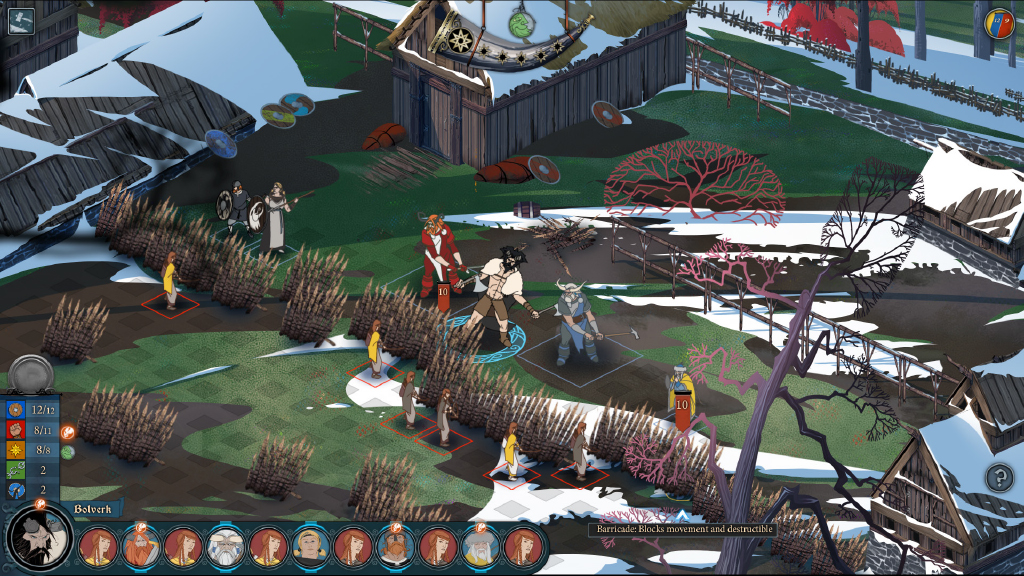
Can you share any hints as to what we can expect to see within the third chapter in the series?
We’ve always wanted to release the trilogy as one full set, We want it to be that seamless feel so we’d love to have some boxset collector’s edition that looks like Tolkien’s masterpieces so you should be able to load it and play first to third. Banner Saga 2 takes you deeper into the story so completing the character arcs and crafting the end game as part of the game trilogy is a nice legacy.
Looking back at the birth of Stoic, the kickstarter, and the development of the second game, what would you say your most memorable moment in Stoic history has been?
I think just being able to create the game we always wanted to do, to craft something you want to put out there for others to enjoy but knowing you did it your way. Taking the leap and seeing the fan reaction has been very humbling for us.
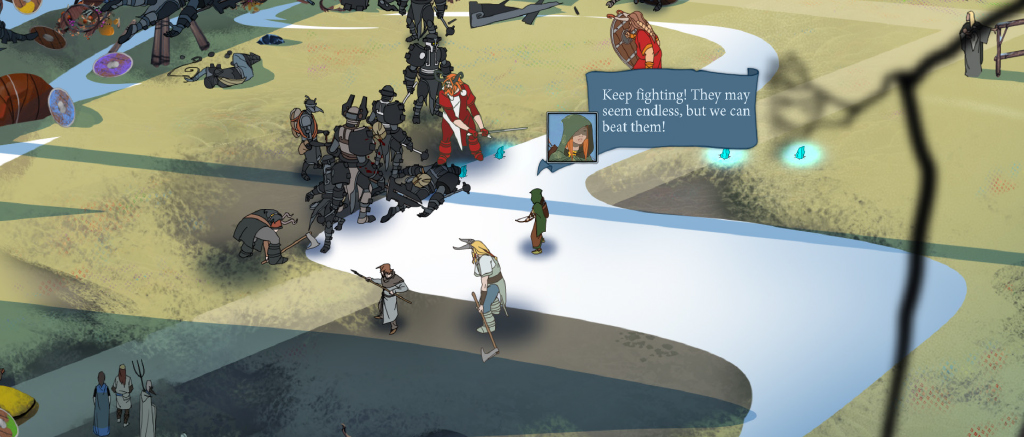
As one of a few development teams that has braved development on multiple platforms including Windows, OS X, Android, iOS, Linux, Playstation 4 & Vita, and Xbox One, can you tell us about what tools made this transition easier?
For a small team, the key to being on multiple platforms is a little bit of planning. We targeted PC and Mac first, but at every step during the process we engaged in the mental exercise of making sure every game system and user interface would work on mobile, and on console. For mobile that means ensuring that the touch ‘hit’ areas are large enough, and that you can envision a way to make the hover tooltips work on a touchscreen. For console it means to think about how the gamepad interface will work. You don’t have to implement the solution right away, but you do need to ensure that you can devise a solution mentally.
Sorting out all the various first party requirements can be a bit tedious, especially on console. It was an immense help to have our publisher, Versus Evil, running point on those tasks. That allowed us to focus on the technical side of porting, where our expertise is more closely aligned.
What technologies were critical to the cross platform development and your ability to bring it to pretty much every platform?
Our engine is built on top of Adobe AIR, a technology that allows you to natively target Windows, Mac, iOS, and Android. Adobe AIR is problematic in many ways, but it made the conversion to mobile much smoother than it might have otherwise been. For console, it is much more difficult. Although Adobe AIR does natively support gamepad controller input, it hasn’t followed the suit of the other major technology players, and hasn’t provided native runtimes for PS4, Xbox One, Linux, or any other platforms. So for these we had to take a different approach. Prior to starting Stoic, we had extensive experience working with ScaleForm, a 3rd party clean-room implementation of the flash runtime. ScaleForm is commonly used in GUI implementations in Triple-A game studios. In fact, we used it at both Sony Online Entertainment, and at Bioware/EA. After some investigation, we determined that it would be possible to wrap our entire game in ScaleForm. Since we are using ScaleForm in a way that really pushes the boundaries of its capabilities, we’ve encountered substantial challenges. Performance in particular has been a major area of focus, but in the end, the strategy has worked. As a result, we have a common engine that works on all the platforms mentioned, and we can port Banner Saga 2 much more quickly than the first one.
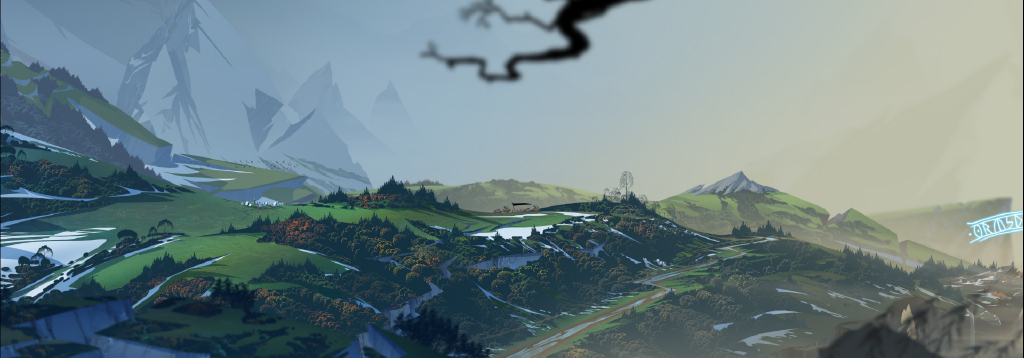
Any plans for a Banner Saga movie? *NerdyGrin*
We’re open to offers!
Do you have any final thoughts you’d like to share with our readers?
Only that we’d just like to say thank you to all the fans and backers who’ve stuck with us and enjoyed the Banner Saga journey as much as we have to date and that we hope that it’s been worth the wait.
Lastly, where can curious players learn more about the Banner Saga?
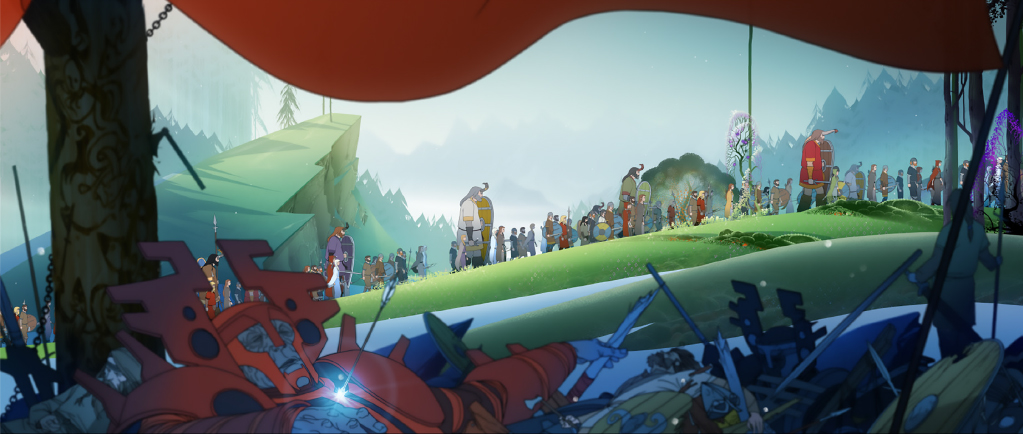
About the Author
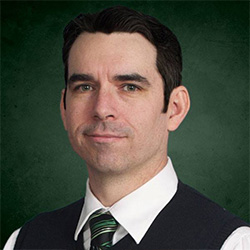
Foghladha
Managing Editor
Foghladha founded the Gaiscioch Social Gaming Community in 2001 and has since been the founder & activities director for this well known community. His role has gone beyond just running the Gaming Community and now includes running the Athletics Program in Portland, Oregon, as well as acting as the Managing Editor of the Gaiscioch Magazine, and is the Lead Producer on the Gaiscioch Livestream Productions. Additionally he networks with game developers to form relationships between Gaiscioch and development studios.
His experience in publishing dates back to helping his Grandparents who operated a printing press for over 40 years. In high school and college Benjamin excelled in journalism and played an active part in the school newspaper. Foghladha currently works full time as the director of technology for a franchise trade publication & education company.
